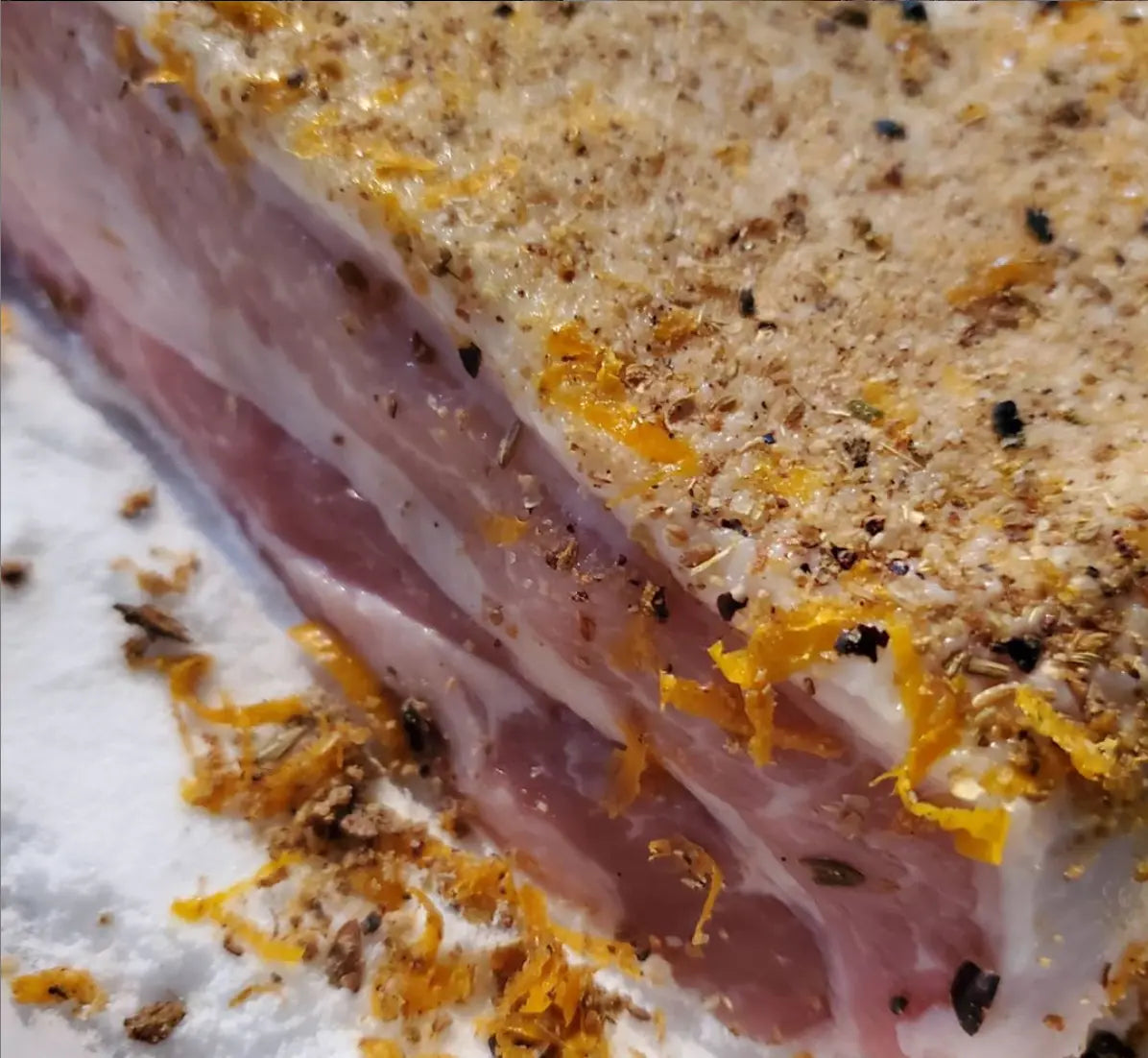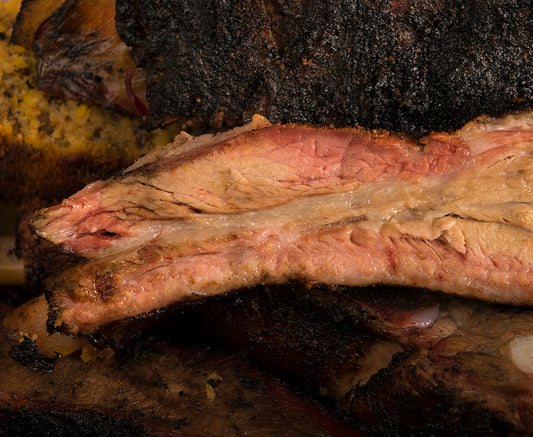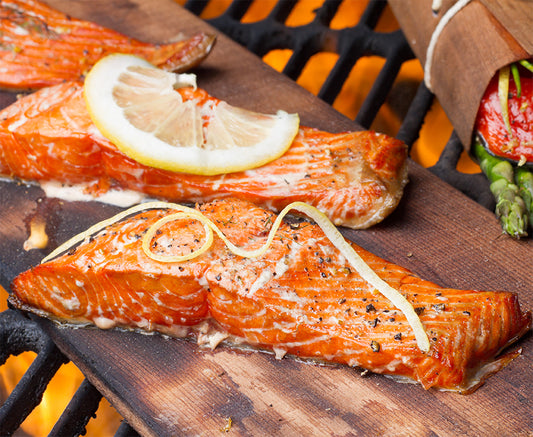We often get asked how to brine and cure meat to perfection. Brining is the process of submerging meat in a brine solution, which is simply salt dissolved in water. The meat absorbs extra liquid and salt, resulting in a juicier and more flavorful final dish. This technique is particularly great for lean cuts of meat that tend to dry out during smoking! On the other hand, curing food is the addition of meats of a combination of salt, sugar, nitrite, and/or nitrate for the purposes of preservation, flavor, and color.
I’d like to share with you our perfected steps on brining and curing while demystifying the process while we’re at it. I will use a turkey in my demonstration. Let’s have some fun with it!
First, let’s start out by introducing what curing does for your food:
- Cures are used to change and enhance the flavor and color of many foods. Curing also stops the growth of bacteria and delays the development of toxic spores discharged by bacterial growth. Primarily, this process helps to preserve food.
- Curing salt is a dry powder mostly composed of standard table salt. By adding sodium nitrite exactly (6.25%) it is then referred to as Praque powder #1, curing salt, or pink curing salt. The pink is added so don’t mistake it for table salt.
- Another cure, Praque powder #2 also includes (4%) sodium nitrate along with (6.25%) sodium nitrite. The remaining is table salt. This product is used to cure sausages. The sodium nitrate reacts to the protein in meat and converts into sodium nitrite.
- You will use Praque powder #2 for the making of salami, ham, and other food products requiring long periods of time to cure before they are fully cooked and consumed.

Pancetta: Curing Pork Belly.
OK, so why do we need to cure meat exactly?
- Meat decomposes rapidly. So by curing, we are extending the meat’s shelf time. It will still decompose, bacteria will still grow on the meat, and it will become inedible, but over a longer period of time.
- Cured meat inhibits the growth of toxins created by a strain of bacteria that causes botulism. Botulism is a severe form of food poisoning caused by ingesting toxin-containing foods. Trust me, you wouldn’t want to contract that!
- There are many other bacteria that cause food poisoning and the cure works its magic to prevent the bacteria from growing and spoiling meat.
- Cured meat not only preserves it, but it also changes the flavor and color of the meat. It also enhances the flavor of the meat. The best example I can give you for this is bacon. Who does not love the smell and flavor of really good bacon?
Next, using a salt cure…
- …is relatively easy, but it’s important to use the right amount. On average you use 2 tablespoons of salt cure with 5 pounds of meat. Now, this is not the only ingredient used to cure meat. Usually, there is salt and sometimes sugar so remember it’s important to follow the recipe. If you are prone to winging it, (like me), at least follow the guidelines and have an idea of the intended results. Some recipes call for more cure, for example, 3 tablespoons for 5 pounds of meat. These are usually for things like polish sausage and meat sticks.
The Process Of Brining
First, let’s start out by introducing what brining does for your food:
- Brines are used for changing and enhancing the flavor and color of many foods. They also stop the growth of bacteria and delay the development of toxic spores discharged by bacterial growth. Primarily, this process helps to preserve food.
- A brine is essentially a high concentration of salt and water. Brine is used for pickling, fermenting, and preserving food. Adding a curing salt to a brine helps to preserve the food.

Brining some chicken breast! Say bye to rubbery chicken breasts.
Making a brine with salt cure…
- Using a salt cure in a brine is just as easy as curing, however, you have to consider the amount of water used. I will use a 15 pound turkey recipe as an example.
- You will need 6 tablespoons of salt cure just for the turkey. You will also need more salt cure for the brine. You can check out my video all about curing in the description box below.
- Then, I place the turkey in a “brine bucket”. I add water to the bucket until the bird is submerged.
- I measure the amount of water required to submerge the bird. Let’s say it’s 6 litres or a little over a gallon. I take the same amount of freshwater, put it into a pot and get it warm to room temperature.
- I start adding table salt to it, I continue to add table salt until it no longer dissolves, for example the water took 2 cups of salt to become salt saturated. I will also add 1.5 times sugar to the brine (3 cups). I will let the brine dissolve and cool down a bit.
- You may want to add some ice to cool it down. I will add the 6 tablespoons of curing salt for the bird and ½ tablespoon of curing salt for every litre of water (3 tablespoons). Now place the bird in your brine, add a zip lock bag of ice on top of the bird to keep it submerged and store in a cool location for 48 hours. I find this to be the perfect brine for smoking/cooking a turkey.
Important Tips For Wet Brining
When it comes to wet brining, it can be a bit confusing at first, when the recipe doesn’t clearly include up to how much meat in the weight you can brine. Here are 3 important tips when it comes to wet brining:
Pieces of Meat Should Be Loose in the Container
For example, take a recipe that can cure up to 48 pounds of meat. If you can fit all pieces of meat loosely in the container, you can cure them altogether. Just don’t stuff the pieces in, they should be loose, and every 24 hours move the pieces around and stir up the brine.
There is no maximum amount of brine that you can make for a certain weight of meat, but there is a minimum. For example, you can brine 2 pounds of chicken breast in five gallons of brine mix, but it only needs one pint of the same brine mix to properly brine or cure it.
Whether brining in five gallons or one pint, the chicken breast will cure at exactly the same rate. Making too much brine is a waste of supplies, but making too little will effect the quality of the final product.
Apply the Basic Rule of Thumb
To make sure you have enough liquid for brining, a basic rule of thumb dictates that the amount of brine should come to 50% in relation to the weight of the meat. Many sources state 40%.
I use the 40% number to insure that I have enough brine. The 40% corresponds to many other recipes, such as what Kutas uses. For his ham recipe, he states 5 quarts of brine will cure up to a 25 pound ham. Use either percentage that you feel more comfortable with.
A whole loin weighs 8 lbs. – 11 lbs. Two quarts of that brine mixture will be enough for 10.4 lbs of meat; 3 quarts will be enough to cure 15.6 lbs. To save supplies, you can scale the recipe down and make one gallon. That will be enough to cure brine/cure 16 lbs. of meat.

From IG: stormy0
Kitchen therapy was desperately needed, so in preparation for tomorrow’s dinner, I am brining a pork butt.
You Can Always Scale the Recipe
The amount you need will depend on the size of the container. You will still need to make enough brine so that whatever container(s) you use, the brine will cover the meat. So, if one gallon is not enough, you will need to scale the recipe to make enough. Or you can go ahead and make the full three gallons and use the amount you need to cover the meat.
Also, once the brine is ready, say you are using multiple containers, such as you are going to cure each piece into a separate one-gallon Ziploc bag, you can distribute that batch of brine between the three bags.
Place one piece of loin into a gallon bag, pour in the brine until it is well covered, close the bag – expelling as much air as possible. Repeat for the other two pieces. If using Ziploc bags for curing/brining, always place them on a rimmed baking sheet. In case there are any leaks, the brine that leaks out will be contained.
Final Thoughts
So there you have it, you now have a handy guide for curing and brining your food! Experiment with it using our Bradley recipes and definitely don’t forget to check out our extensive library of food smoking tips and tricks!
Happy smoking!





